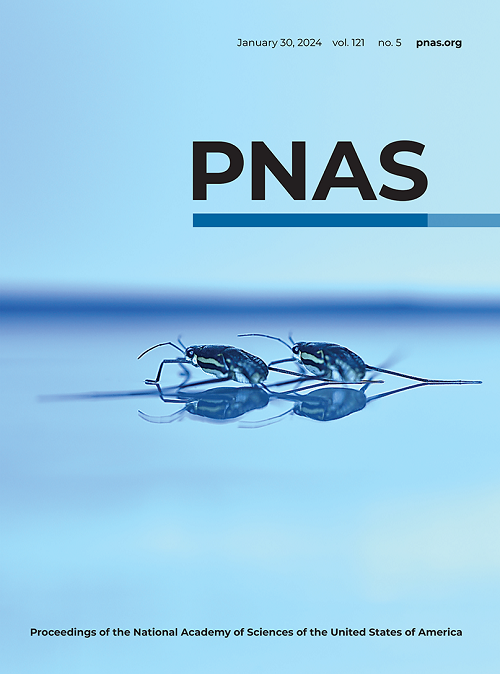Setdb1 ablation in macrophages attenuates fibrosis in heart allografts.
IF 9.1
1区 综合性期刊
Q1 MULTIDISCIPLINARY SCIENCES
Proceedings of the National Academy of Sciences of the United States of America
Pub Date : 2025-06-24
DOI:10.1073/pnas.2424534122
引用次数: 0
Abstract
Tissue fibrosis is commonly associated with organ malfunction and is strongly associated with the development of chronic rejection, cardiovascular diseases, and other chronic diseases. Fibrosis also contributes to immune exclusion in tumor tissues. Targeting fibrosis might be a strategy for prolonging allograft survival while suppressing cancer development. Here, single-cell transcriptomes of human and mouse heart allografts showed that macrophages accumulated in grafts with fibrosis were reprogrammed via histone methylation regulated by Setdb1, an H3K9 methyltransferase. Myeloid-specific deletion of Setdb1 prolonged heart allograft survival but reversed immune exclusion in tumor tissues. Interestingly, myeloid-specific Setdb1-knockout led to lower fibrosis in heart allografts and tumor tissues in mice. Our single-cell sequencing data showed that Setdb1 ablation impaired Fn1+ and SPP1+ profibrogenic macrophage reprogramming. Mechanistically, Fn1, which was induced by the CCR2-Creb/Setdb1 axis, upregulated the expression of genes related to fibrosis in fibroblasts and macrophages via ITGA5 and PIRA receptors. Blocking the interaction between FN1 and these receptors inhibited fibrosis in allograft and tumor tissues. Our results reveal a target, histone methylation in macrophages, for the treatment of fibrosis-related disease.巨噬细胞Setdb1消融可减轻同种异体心脏移植的纤维化。
组织纤维化通常与器官功能障碍相关,并与慢性排斥反应、心血管疾病和其他慢性疾病的发生密切相关。纤维化也有助于肿瘤组织的免疫排斥。靶向纤维化可能是延长同种异体移植物存活同时抑制癌症发展的策略。这里,人类和小鼠同种异体心脏移植的单细胞转录组显示,在纤维化移植物中积累的巨噬细胞通过由H3K9甲基转移酶Setdb1调节的组蛋白甲基化被重编程。骨髓特异性的Setdb1缺失延长了同种异体心脏移植的存活,但逆转了肿瘤组织中的免疫排斥。有趣的是,骨髓特异性setdb1敲除导致小鼠同种异体心脏移植物和肿瘤组织纤维化降低。我们的单细胞测序数据显示,Setdb1消融会损害Fn1+和SPP1+促纤维化巨噬细胞重编程。机制上,由CCR2-Creb/Setdb1轴诱导的Fn1通过ITGA5和PIRA受体上调成纤维细胞和巨噬细胞中纤维化相关基因的表达。阻断FN1与这些受体之间的相互作用可抑制同种异体移植物和肿瘤组织的纤维化。我们的研究结果揭示了巨噬细胞组蛋白甲基化治疗纤维化相关疾病的靶标。
本文章由计算机程序翻译,如有差异,请以英文原文为准。
求助全文
约1分钟内获得全文
求助全文
来源期刊
CiteScore
19.00
自引率
0.90%
发文量
3575
审稿时长
2.5 months
期刊介绍:
The Proceedings of the National Academy of Sciences (PNAS), a peer-reviewed journal of the National Academy of Sciences (NAS), serves as an authoritative source for high-impact, original research across the biological, physical, and social sciences. With a global scope, the journal welcomes submissions from researchers worldwide, making it an inclusive platform for advancing scientific knowledge.

 求助内容:
求助内容: 应助结果提醒方式:
应助结果提醒方式:


